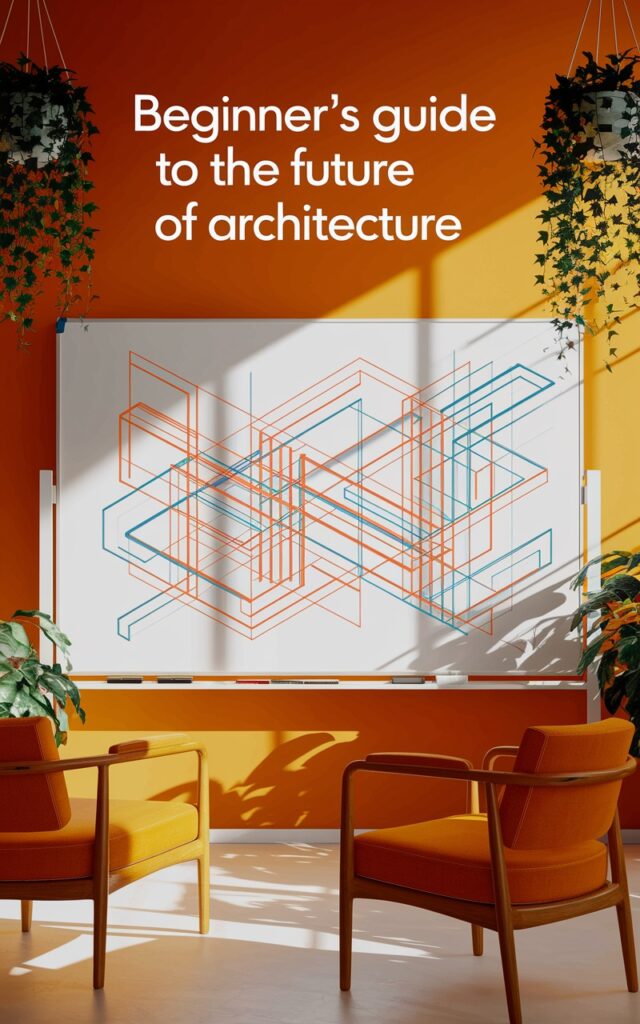Introduction
Imagine stepping into a world where buildings twist like DNA strands, facades mimic honeycombs, and structures breathe with nature. This isn’t science fiction—it’s the realm of parametric architecture, where mathematics meets creativity to redefine the boundaries of design. For students diving into this field, the right software isn’t just a tool—it’s a magic wand that transforms abstract ideas into tangible marvels.
But how do you choose the perfect digital companions for this journey? From mastering Rhino’s precision to harnessing Grasshopper’s algorithmic power, the tools you select will shape your ability to innovate. Let’s explore the essential software that empowers parametric architecture students to turn imagination into reality—and discover how pioneers like Soga Design Studio are making this futuristic vision accessible across India.
Why Mastering Parametric Software Is Important
Parametric design isn’t just about aesthetics—it’s a revolution in problem-solving. By leveraging algorithms and computational logic, architects can optimize structures for sustainability, cost, and functionality. For students, proficiency in tools like Rhino and Grasshopper isn’t optional; it’s the gateway to careers in cutting-edge firms and impactful projects.
In India, where urban infrastructure demands innovative solutions, parametric design offers a way to balance rapid development with environmental responsibility. Studios like Soga Design Studio are leading this charge, proving that complex geometries and eco-conscious designs don’t have to break the bank. Their work exemplifies how parametric tools can democratize high-end architecture, making it viable for schools, communities, and startups.
Key Software Tools for Parametric Architecture Students
1. Rhinoceros 3D (Rhino)
Rhino is the cornerstone of parametric design. Its intuitive interface and precision modeling capabilities make it ideal for creating complex geometries. Key features include:
- NURBS modeling for mathematically accurate curves and surfaces
- Compatibility with plugins like Grasshopper and PanelingTools
- Lightweight file handling for large-scale projects
2. Grasshopper
If Rhino is the canvas, Grasshopper is the brush that paints dynamic, data-driven designs. This visual programming tool allows students to:
- Create algorithms that generate forms based on parameters like sunlight, wind, or material constraints
- Iterate designs rapidly using sliders and real-time previews
- Integrate with simulations for structural analysis
3. Revit + Dynamo
For projects requiring Building Information Modeling (BIM), Revit paired with Dynamo bridges parametric design with practical construction. Benefits include:
- Automated documentation and quantity takeoffs
- Parametric families for doors, windows, and structural elements
- Seamless collaboration with engineers and contractors
4. Blender
Blender’s open-source platform offers sculpting, animation, and rendering tools perfect for visualizing parametric concepts. Highlights:
- Real-time rendering with Eevee for stunning presentations
- Geometry Nodes for procedural modeling
- A thriving community for tutorials and plugins
5. Excel (Yes, Excel!)
Surprised? Spreadsheets are a stealth weapon in parametric workflows. Students use Excel to:
- Organize data inputs for Grasshopper scripts
- Calculate material costs and structural loads
- Generate patterns using mathematical formulas
Tips for Students: Learning and Staying Ahead
- Start small: Master Rhino basics before diving into Grasshopper’s logic.
- Join forums: Platforms like Food4Rhino and Grasshopper3D offer free resources.
- Experiment: Break rules. Use Excel to generate fractal patterns or Revit to automate stair designs.
- Follow Indian studios: Learn from firms like Soga tackling climate-responsive designs on tight budgets.
Conclusion
Parametric architecture is more than a trend—it’s a lens to reimagine our world. With tools like Rhino, Grasshopper, and Blender, students can blend art and engineering to create structures that inspire and endure. As Indian studios like Soga Design Studio prove, these technologies aren’t just for luxury projects; they’re catalysts for affordable, sustainable innovation.
Ready to shape the future? Download Rhino, join a Grasshopper tutorial, or share your parametric experiments in the comments below. Let’s build a world where design is limitless, inclusive, and alive with possibility.




